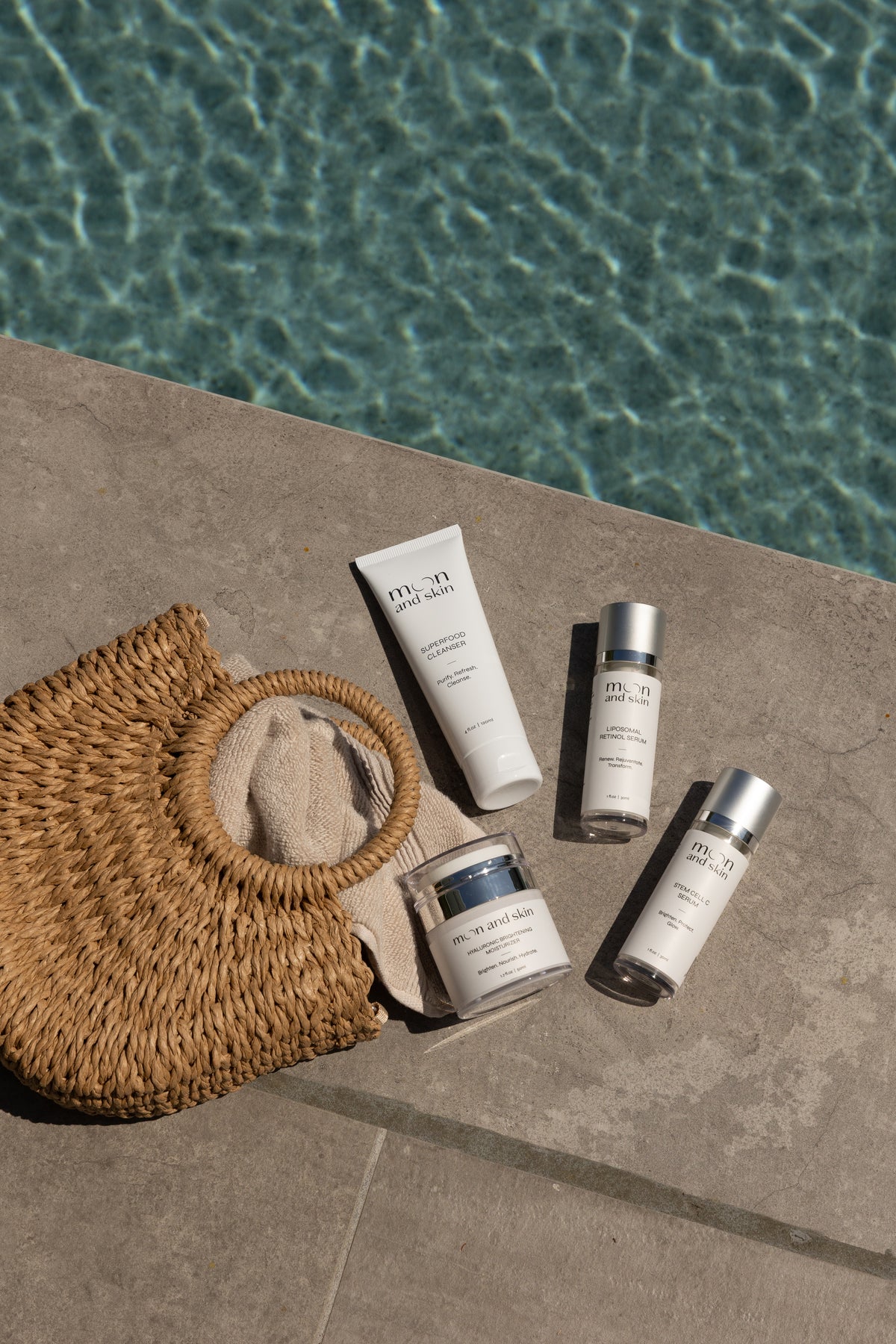Table of Contents
Introduction
Navigating the world of skincare can often feel overwhelming, especially when it comes to applying products in the correct order. One of the most common dilemmas we face is whether to apply pimple cream before or after moisturizer. This question is not just about preference; the order in which we apply our skincare products can significantly affect their efficacy.
Did you know that improper layering can negate the benefits of potent active ingredients? According to dermatologists, following the correct application order is essential for maximizing the effectiveness of treatments, particularly for acne-prone skin. As a skincare brand focused on clean and thoughtful formulations, we understand the importance of educating our community about these nuances.
In this blog post, we will explore the optimal order for applying skincare products, specifically focusing on pimple cream and moisturizer. We will delve into the science behind why product layering matters, provide practical tips for building your skincare routine, and highlight how our products can support your journey to clear, healthy skin.
Together, let’s break down the complexities of skincare layering and empower you to make informed choices for your skin.
Understanding Skincare Layering
The Importance of Application Order
When it comes to skincare, the application order can make a world of difference. Products with lighter textures should generally be applied before heavier ones. This is because lighter formulations are designed to penetrate the skin quickly, delivering active ingredients where they are needed most. Conversely, thicker products, like creams and oils, can create a barrier that prevents lighter products from effectively absorbing.
The Golden Rule: Thinnest to Thickest
The golden rule of skincare layering is to apply products from thinnest to thickest. This means starting with cleansers, toners, and serums before moving on to moisturizers and treatments. By following this order, you ensure that each product has the opportunity to do its job without being blocked by heavier formulations.
- Cleanser: The first step is always cleansing your skin to remove dirt, oil, and makeup. Our Superfood Cleanser is formulated to cleanse gently while nourishing your skin with essential nutrients.
- Toner: Toners help to balance the skin's pH and prepare it for subsequent treatments.
- Serums and Treatments: This is where pimple cream comes into play.
- Moisturizer: Finally, apply your moisturizer to lock in hydration.
Why Timing is Key
Allowing time between layers is also crucial. After applying a treatment like pimple cream, we recommend waiting a few minutes before applying moisturizer. This waiting period allows the active ingredients in the treatment to absorb fully into the skin without interference from heavier products.
Takeaway
Understanding the importance of application order and timing can significantly impact the effectiveness of your skincare routine. By following the thinnest to thickest rule, you can get the most out of your products and achieve clearer, healthier skin.
Pimple Cream: The Star of the Show
What is Pimple Cream?
Pimple cream, often referred to as acne treatment, typically contains active ingredients like salicylic acid, benzoyl peroxide, or sulfur. These ingredients target the underlying causes of acne, such as excess oil production and bacteria.
How to Apply Pimple Cream
When applying pimple cream, focus on the affected areas. Here’s a simple step-by-step guide:
- Cleanse your face thoroughly with a suitable cleanser.
- Apply Pimple Cream: Use a small amount directly on the pimple or affected area.
- Allow it to Absorb: Wait for a few minutes to let the cream penetrate the skin.
- Moisturize: After the cream has dried, apply your moisturizer to hydrate your skin.
The Benefits of Our Pimple Treatments
Our Liposomal Retinol Serum and Hyaluronic Brightening Moisturizer can complement your spot treatment effectively. While the Liposomal Retinol targets fine lines and texture, the Hyaluronic Brightening Moisturizer hydrates and brightens the skin, creating a well-rounded approach to skincare.
Key Takeaway
Pimple cream should be applied directly to the affected areas after cleansing and before moisturizing. This ensures that the active ingredients have the best chance to work effectively.
The Role of Moisturizer in Your Routine
Why Moisturizer is Essential
Many people with acne-prone skin may be tempted to skip moisturizer, fearing it will exacerbate breakouts. However, hydration is crucial for all skin types. A good moisturizer helps maintain the skin barrier, preventing dryness and irritation that can occur from acne treatments.
Choosing the Right Moisturizer
Look for lightweight, non-comedogenic moisturizers that won’t clog pores. Our Hyaluronic Brightening Moisturizer is an excellent choice. It's formulated with hyaluronic acid to hydrate without adding excess oil.
How to Apply Moisturizer
- After Your Treatment: Once your pimple cream has dried, take a pea-sized amount of moisturizer.
- Apply Gently: Use upward strokes to apply the moisturizer evenly across your face, avoiding the areas treated with pimple cream if necessary.
Takeaway
Moisturizer plays a vital role in maintaining skin health, especially when using acne treatments. Always apply it after your pimple cream to ensure your skin remains hydrated and balanced.
Common Skincare Mistakes to Avoid
Overloading Your Skin
One of the most common pitfalls in skincare is using too many products at once. Layering multiple treatments can overwhelm your skin and lead to irritation.
Ignoring Your Skin Type
Another mistake is ignoring your skin type. Tailoring your skincare routine to your unique needs is essential for achieving the best results.
Skipping Sunscreen
Don't forget sunscreen! Protecting your skin from UV damage is crucial, especially when using treatments that may increase sensitivity.
Takeaway
Avoid common skincare mistakes by keeping your routine simple, focusing on your skin type, and never skipping sunscreen.
Building Your Skincare Routine
Cleanse, Treat, Moisturize
The best approach to building your skincare routine is to follow the basic structure of cleanse, treat, and moisturize.
- Cleanse: Start with our Superfood Cleanser to remove impurities.
- Treat: Apply your pimple cream to target specific issues.
- Moisturize: Finish with the Hyaluronic Brightening Moisturizer to keep your skin hydrated.
Bundle & Save
For those looking to create a complete skincare routine, consider our Bundle & Save collection. This offers an excellent way to experience our best-selling products together at a better value.
Takeaway
Building a skincare routine is an ongoing journey. By focusing on a straightforward structure, you can simplify your skincare process and achieve healthier skin.
Frequently Asked Questions
1. Can I use pimple cream and moisturizer together?
Yes, you should apply pimple cream first to targeted areas and follow with moisturizer to keep your skin hydrated.
2. How long should I wait between applying pimple cream and moisturizer?
We recommend waiting a few minutes after applying pimple cream to allow it to absorb fully before applying moisturizer.
3. Is it necessary to apply pimple cream only at night?
While many people apply pimple cream at night, you can use it during the day as well. Just be sure to follow up with sunscreen if used during the day.
4. What if my skin feels dry after using pimple cream?
If your skin feels dry, consider using a gentle, hydrating moisturizer like our Hyaluronic Brightening Moisturizer to restore moisture.
5. How can I ensure my skincare routine is effective?
Stick to a simple routine that addresses your skin's specific needs. Avoid overloading with products, and listen to your skin's reactions.
Conclusion
Understanding the correct order of applying skincare products, especially pimple cream and moisturizer, is key to achieving your desired skin goals. By following the thinnest to thickest rule and allowing time for absorption, you can maximize the benefits of your skincare routine.
As we’ve outlined, a well-structured regimen that includes our Superfood Cleanser, Liposomal Retinol Serum, and Hyaluronic Brightening Moisturizer can provide a powerful foundation for treating and maintaining your skin health.
Take the next step in your skincare journey by exploring our Bundle & Save collection. Together, let’s celebrate and support your skin through all its phases.







